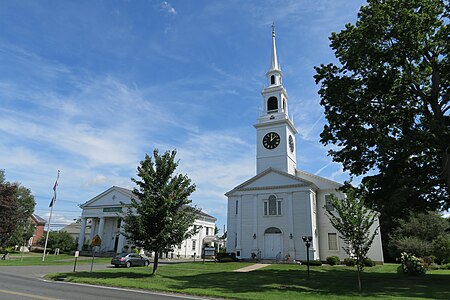Hadley, Massachusetts
1661 establishments in the Massachusetts Bay ColonyHadley, MassachusettsMassachusetts populated places on the Connecticut RiverPages including recorded pronunciationsSpringfield metropolitan area, Massachusetts ... and 3 more
Towns in Hampshire County, MassachusettsTowns in MassachusettsUse mdy dates from July 2023

Hadley ( , HAD-lee) is a town in Hampshire County, Massachusetts, United States. The population was 5,325 at the 2020 census. It is part of the Springfield, Massachusetts Metropolitan Statistical Area. The area around the Hampshire and Mountain Farms Malls along Route 9 is a major shopping destination for the surrounding communities.
Excerpt from the Wikipedia article Hadley, Massachusetts (License: CC BY-SA 3.0, Authors, Images).Hadley, Massachusetts
Middle Street,
Geographical coordinates (GPS) Address Website Nearby Places Show on map
Geographical coordinates (GPS)
| Latitude | Longitude |
|---|---|
| N 42.341666666667 ° | E -72.588888888889 ° |
Address
First Congregational Church of Hadley
Middle Street 102
01035
Massachusetts, United States
Open on Google Maps




